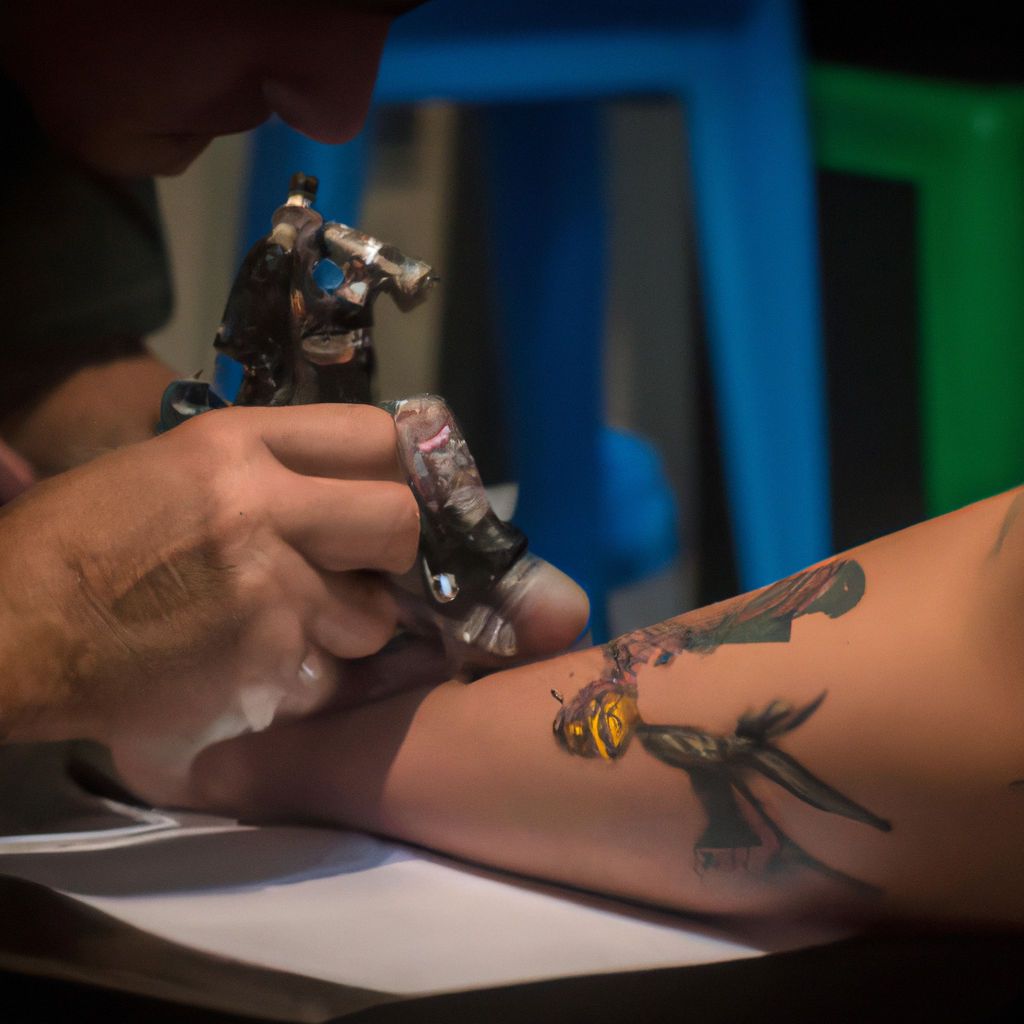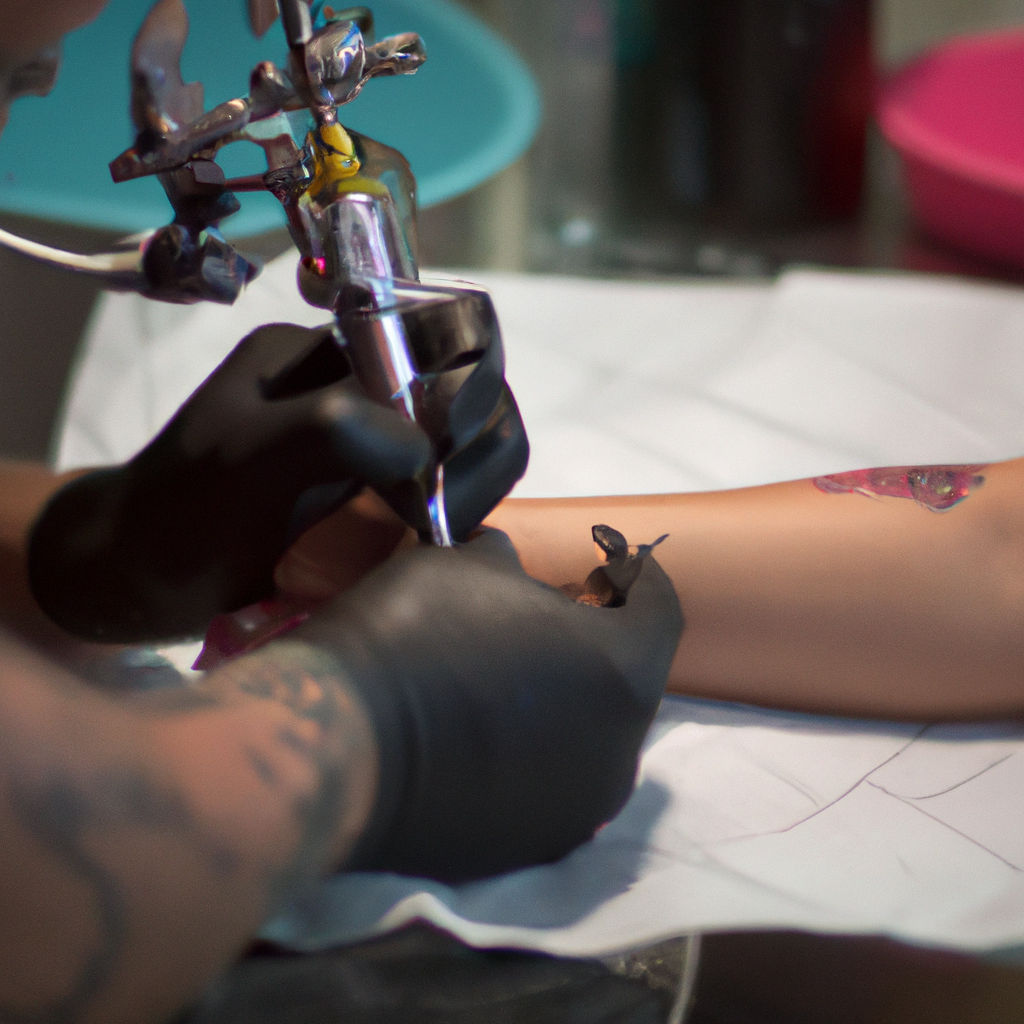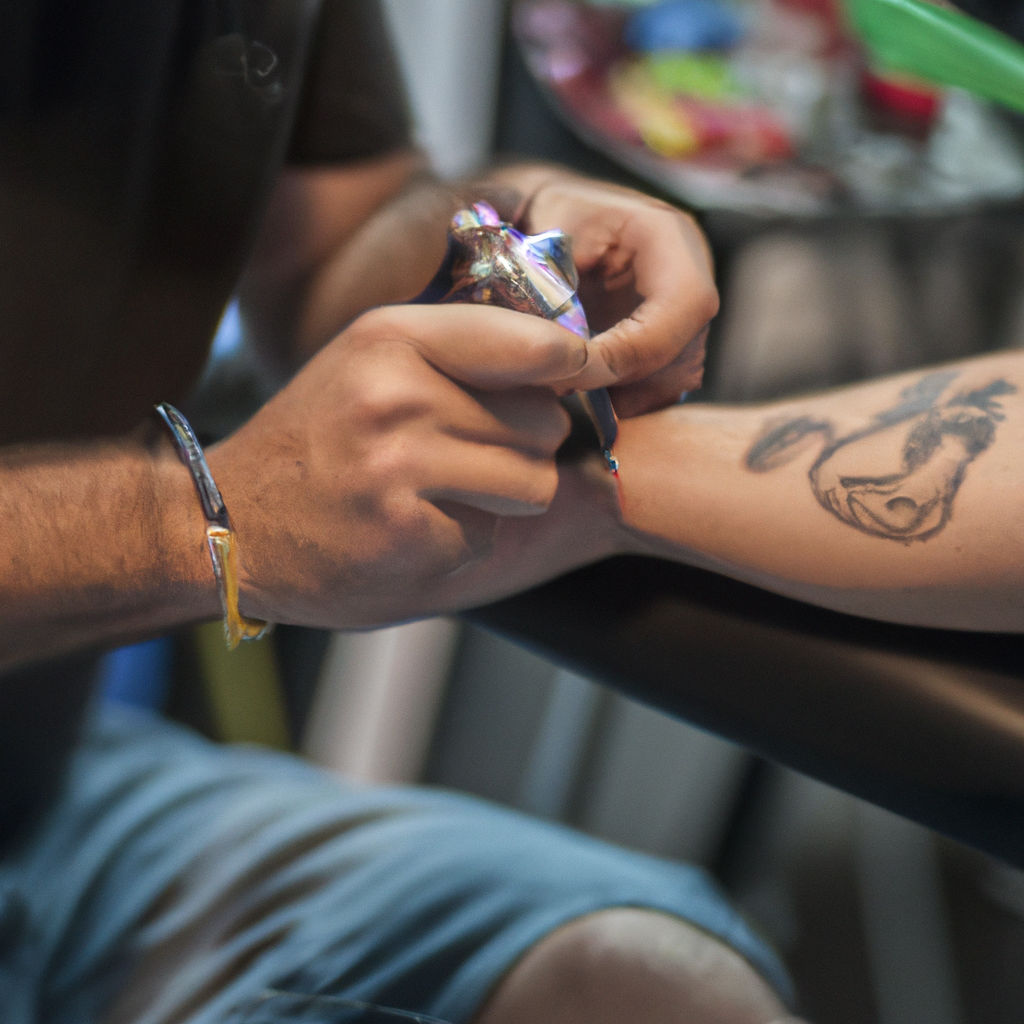“Hebrew Tattoo Inspirations for 2024: Translating Tradition into Trend”
Hebrew Tattoos: Inked Symbols of Identity and Traditions
Imprints of expressive ink take on various forms where every design tells a diverse story – from tales of personal journeys, emblems of resilience, to the powerful symbolism of one’s faith and heritage. In the rich culture of body art, Hebrew tattoos are gaining an escalating surge of interest. Through a blend of elegant aesthetics and profound religious and cultural significance, these tattoos have been embraced as a significant trend with a thoughtful cultural facet.
The culture and the symbolism of Hebrew tattoos hold a distinctive allure due to their cultural and religious groundwork. They are not merely accessories adorned on your skin, but profound depictions of individual narratives. Nevertheless, diving into this realm of ink requires an essential understanding of the cultural and religious implications adorned within these tattoos. Just as one wouldn’t want a symbol or phrase misrepresented in their work, being respectful to the language and religion it stems from is paramount.
The connection between tattoos and identity provides a compelling narrative within the body art culture. Tattoos, enamoured for centuries, remain relevant owing to their profound function – as an external display of one’s inner self and ideals. Over time, such depictions of ideology seeped into various societal realms, including the LGBTQ+ community. In this community, tattoos have evolved as resilient badges that celebrate diversity, imbibe strength, and most importantly, uphold their identity. Each marking underlines personal narratives, embodying their liberation, acceptance, and identity.
Hebrew tattoos, with their rich background and versatile symbolism, have found a unique place among the non-Jewish and LGBTQ+ community. Bearing in mind the deep-seated cultural context these tattoos encapsulate, we are driven to discover an equilibrium of appreciation and authenticity. As we delve deeper into this vibrant culture of Hebrew tattoos, let us pledge to respect and honour their narrative, ensuring an empowering journey of self-expression.
A Journey Through the Past: The History of Hebrew Tattoos
Not many people realize, but tattoos have been an integral part of human culture for thousands of years. Their significance, however, has evolved over time and differs across societies. Hebrew tattoos, in particular, stand as fascinating examples of cultural representation in body art.
As part of ancient Semitic languages, Hebrew carries a rich array of symbolism and meaning. The use of Hebrew phrases, symbols, and lettering in body art dates back to antiquity. However, traditionally, the Jewish law known as Halakha, prohibits tattoos, deriving from a biblical commandment in Leviticus 19:28. Despite this, Hebrew tattoos continue to hold a unique appeal for multiple reasons.
One historic aspect of Hebrew tattoos revolves around the use of inscriptions—words, verses, or prayers—often drawn from Jewish religious texts. Such tattoos serve as permanent reminders of personal faith, cultural heritage, or a specific spiritual lesson. Additionally, symbols like the Star of David, the Hamsa Hand, or the Chai have historical significance in Jewish culture and are commonly seen in Hebrew tattoos.
Hebrew Tattoos: A Popular Choice Beyond Cultural Boundaries
Interestingly, the appeal of Hebrew tattoos extends far beyond the Jewish community. They’ve gained popularity among a diverse range of individuals, including the non-Jewish and the LGBTQ+ community, for their aesthetics, profound meanings, and a sense of spiritual connection.
Hebrew tattoos, featuring words like “Ahava” (love) or phrases such as “Ani L’Dodi V’Dodi Li” (I am my beloved’s and my beloved is mine), resonate with the universal human experiences of love and devotion. As such, they’ve become particularly popular among those seeking to make a statement about their identity or affirm their values—a trend noticeable within the LGBTQ+ community, as well.
Within the LGBTQ+ community, Hebrew tattoos are often seen as symbols of resilience, strength, or liberation. They not only express personal identity but also mark a connection to the broader struggle for recognition and acceptance. For many, a Hebrew tattoo might represent a journey of self-discovery or the experience of coming out, adding a deeply personal touch to the inked artwork.
In essence, the history and cross-cultural popularity of Hebrew tattoos underline their profound symbols and meanings, making them more than just ink on skin. Into the future, this trend of adorning Hebrew body art seems to be a trajectory that will continue to grow.

Decoding Hebrew Symbols and Their Meaning
Hebrew culture, laden with deep philosophical values, can be fascinating and profound. Hebrew tattoos reflect these facets through numerous iconic symbols and inscriptions often embedded with deeper meanings. The Star of David, for example,is one such symbol that represents divine protection and represents Judaism. Typically, this six-pointed star is associated with strength and intellect, making it a popular choice for tattoos.
The Menorah, another significant symbol, stands for enlightenment and wisdom. It is a seven-lamp stand that signifies the seven days of creation. People seeking knowledge and wisdom often get this symbol tattooed. More than a mere aesthetic choice, it serves as a testament to their pursuit of knowledge and understanding.
The Hamsa, often referred to as the Hand of God, is a potent symbol of protection in Hebrew culture. With its fingers spread out, it serves as a barrier against negativity and harmful influences. This symbol is popular among individuals seeking peace, protection, and serenity.
Navigating Through Hebrew Symbols in Tattoo Art
Incorporating these symbols into tattoo designs requires not just creativity, but also a thorough understanding of their inherent meanings. Emblematic of both individual and cultural narratives, these symbols serve as a bridge between personal identity and collective heritage.
For instance, the Star of David can be designed with intricate patterns or colors that make it an aesthetically appealing representation of Jewish heritage. The Menorah can be tattooed in a minimalistic style, emphasizing its elegance and refined simplicity. The Hamsa, with its complex details, can be combined with other motifs to create a stunning composite tattoo, thus enhancing its protective allure.
In conclusion, Hebrew symbols indeed hold a powerful personal and cultural resonance. When mindfully incorporated in tattoo art, these symbols uphold an enduring legacy laden with profound meanings. The right tattoo artist can transform these symbols into a captivating piece of body art, pushing the boundaries of creativity, while maintaining respect for tradition.
Delving into Important Hebrew Symbols and Their Significance
Hebrew symbols and inscriptions form a significant part of the cultural heritage passed down through generations of Jewish communities. These motifs carry profound meanings, embody cultural ethos and spiritual depth, and when inked as tattoos, not only serve as aesthetic art but also connect the tattoo wearer to a rich tradition.
The Star of David
One of the most recognizable symbols in the Hebrew culture is the Star of David, also known as the Shield of David or Magen David. This six-pointed star is an important symbol in Judaism and often represents God’s rule over the universe in all six directions: north, south, east, west, up, and down. It is also a symbol of protection, making it a popular choice among individuals seeking a talismanic tattoo.
The Menorah
Another prominent Hebrew symbol is the Menorah, a seven-branched candelabrum used in the ancient temple in Jerusalem. The Menorah signifies enlightenment, wisdom, and knowledge. It holds a special place in Jewish iconography and can make for an empowering and spiritually enlightening tattoo.
The Hamsa
The Hamsa, or the Hand of Fatima, is a powerful protective symbol against the evil eye in many cultures, and Hebrew culture is no exception. It is believed to bring its owner happiness, luck, health, and good fortune. Sometimes it’s also inscribed with Hebrew prayers for added protection or blessings.
In addition to these, there are numerous inscriptions and symbols like the Tree of Life, Chai symbol, and HaYah – each possessing its own unique significance and value. Incorporating them into body art can yield beautiful, meaningful tattoos that resonate deeply with the wearer.
Exploring Prominent Hebrew Phrase Tattoos
Hebrew phrase tattoos have also gained popularity due to their deeply philosophical and spiritual connotations. Phrases from Jewish scriptures, prayers, or teachings can add profound layers of meaning to a simple tattoo.
‘Ani Ohev Otcha’
One such phrase, ‘Ani Ohev Otcha,’ for instance, translates to ‘I love you.’ It is often chosen by individuals to express love or commitment.
‘Chazak Ve’ematz’
Another powerful Hebrew phrase that finds its way into tattoos is ‘Chazak Ve’ematz,’ which commands ‘Be strong and courageous.’ It not only serves as a mantra for personal growth but also as an affirmation of resilience and strength for overcoming life’s challenges.
Hebrew phrase tattoos provide an inspiring, affirming, and deeply personal link to a cultural and spiritual tradition, especially when chosen with full understanding of the phrases’ meanings and their resonance with the individuals’ own journey and beliefs.

Foregrounding Hebrew Tattoo Trends for 2024
In an ever-evolving world of body art, the upswing in the popularity of Hebrew tattoos is undoubtedly noteworthy. Hebrew tattoos that incorporate significant symbols, phrases and inscriptions are slated to continue making waves in the horizon of 2024.
A key trend emerging with Hebrew tattoos involves the incorporation of innovative designs and colors that give a modern twist to traditional symbols. This blend of tradition and innovation reflects an underlying desire to both respect and personalise these inherently meaningful symbols. Loaded with historical, cultural, and spiritual significance, these tattoos artistically portray personal narratives, beliefs and emotions.
Crossing Paths with the LGBTQ+ Community
The LGBTQ+ community, known for its penchant for self-expression, finding resonance with art forms that symbolize liberation, equality, and identity, is subtly shaping the trends in Hebrew tattoos. With the community’s growing influence, Hebrew tattoos are expected to take on revolutionary design interpretations that reflect both the community’s struggles and celebrations.
A trend that is up-and-coming among LGBTQ+ individuals involves the fusion of Rainbow Pride colors with Hebrew symbols or lettering. This blend not only exudes aesthetic appeal but also captures the intersection of faith and sexual orientation, embodying the essence of freedom, identity and equality.
SEO Keywords: Hebrew tattoos, trendy tattoos, body art trends 2024, LGBTQ+ tattoos, innovative tattoo designs, traditional Hebrew symbols, insta-tattoo trend, faith-based body art.
(Note: Insert your required number of times your SEO keywords into the article to efficiently optimize your content.)

In the fascinating realm of tattoo art, where visuals meet powerful meanings, Hebrew tattoos have emerged as a popular trend, particularly among the LGBTQ+ community. While using tradition to create modern trends, it’s essential to understand and respect the cultural significance underpinning these timeless scripts and symbols.
This fusion of tradition and trend bears testament to the evolving societal norms and values. It’s a space where different cultures intersect, and a common element, like a Hebrew inscription, can foster a sense of shared identity among individuals from diverse backgrounds. This sentiment particularly resonates within the LGBTQ+ community, who often find comfort, strength, and liberation in expressing their unique identities through impactful body art.
Hebrew tattoos, with their rich lineage and spiritual connotations, can serve as a powerful medium to communicate one’s own spiritual beliefs, acknowledge their struggle, or celebrate their liberation. Yet, while these tattoos may honor ancestry or spiritual beliefs, each etching is ultimately a narrative of individuality, a piece deeply personal to the bearer.
The robust resurgence of the Hebrew tattoo trend is a testament to the constant evolution of tattoo culture. It reaffirms that tattoos are not just skin-deep adornments but deeply rooted in personal, spiritual, and societal aspects of life, morphing into compelling narratives worth sharing.
As we look towards the future, we should continue to celebrate the unique blend of tradition and modernity in Hebrew tattoos whilst remaining cognizant of their origins and meanings. Above all, this powerful form of self-expression is beyond mere aesthetics; it’s a testament to one’s journey, struggles, triumphs, identity, and resilience, especially for the vibrant LGBTQ+ community.
In conclusion, whether it’s an intricate Star of David or a simple Hebrew phrase, each tattoo tells a story, each symbol holds significance, and each individual bears their ink with pride. As we welcome the future, let’s cherish this harmonious blend of tradition and trend, and appreciate the profound narratives they encapsulate.